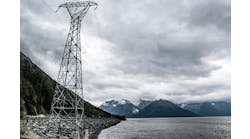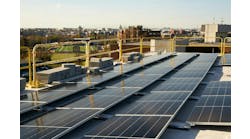Credit: Lokal_Profil
As we bring more energy online from distributed energy sources, planners are grappling with a challenging math problem: How do we deal with intermittent energy produced by non-utility sources, integrate storage systems, match supply and demand, and manage it all in the most reliable and efficient manner possible?
“Planners have to think about how to get as much renewable energy as possible and understand the reliability and the full range of services and how they can get that out of a combination of renewable energy and storage,” says Neil Fromer, executive director of the Caltech Resnick Sustainability Institute.
At Caltech, researchers are working to solve that math problem—and it’s not simple, he says.
“The biggest problem is the computational challenge of understanding how the electricity will flow from where it will be generated to where it will be used. Under the old paradigm of controllable supply and predictable demand, we have been able to solve that problem frequently enough so we can match supply and demand,” he says.
“But a system with millions of active endpoints all participating in this in real time — how can you turn that problem into one that can be solved in real time, automatically, adjusting to the situation on the ground as quickly as possible?”
Solving the problem begins with understanding the math problems and breaking them down into easier-to-solve problems, he says. When the researchers look at the slightly different but solvable math problems, they often find their way to the right answer.
“If we can simplify a problem into one we can solve but isn’t exactly right, we often get the right answer,” Fromer says.
Part of the solution to the challenge of integrating all the renewable energy required by states like California is finding ways to use both renewable energy and onsite devices in ways that make the best use of them, says Fromer.
“A lot of devices — pool pumps and even refrigerators — have certain profiles and can be used to implement some of these smarter ideas,” he says. In some cases, that means shutting the devices down during periods of high electricity demand.
In other cases, that means responding to the needs of the system.
“Solar inverters are one way to do this. If you’re over-generating solar, you can adjust how it’s being converted so that you can provide reliability support for the grid instead of just power for a home,” Fromer says.
Microgrids will also play an important role in helping create a reliable grid that incorporates renewable energy, he says.
“Microgrids are another way to think about end users becoming more active participants in the electric grid as a whole. They are users with storage and generation and can be self-sufficient for some amount of time and provide a little electricity to the broader grid.”
Again, this involves a sophisticated math-driven system that’s able to understand what power sources are available at any given time and make them available to meet demand, he says.
It’s still unclear how the mathematical calculations will be used when they’re available, says Fromer.
Neil Fromer Discusses Renewable Energy & Storage
“We’re still working on that. A lot of people need to use these types of techniques to put them into a system the utilities implement. They could do it through the regulatory process or a product to manage the grid more effectively,” says Fromer.
Whether the calculations are used in regulation or products, the fact that we now face this computational challenge points to the need for a different utility model.
“At an engineering scale and at the regulatory level, we’re starting to see that the existing models for utilities doing business are incompatible with our goals of increasing our use of renewable energy,” says Fromer.
Track stories about the evolving microgrid market by subscribing to our free Microgrid Knowledge newsletter.








